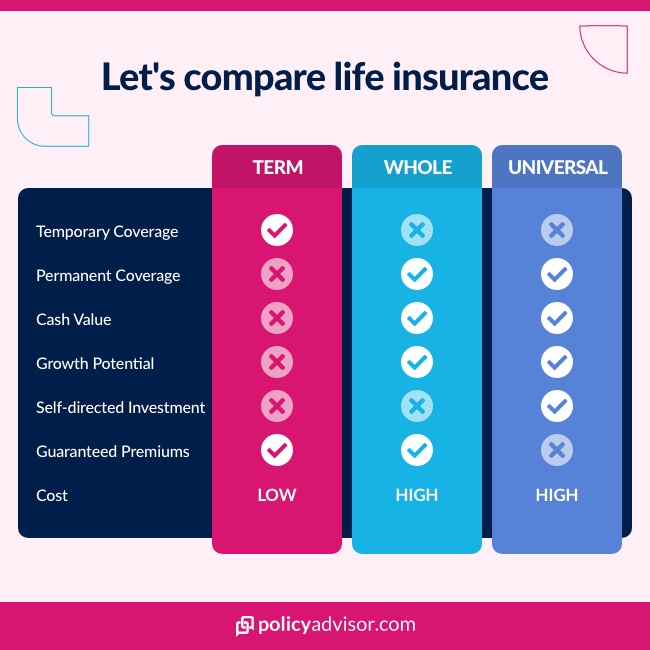What is an annuity?
An annuity is a financial product that pays out an amount of money over a period of time. There are two phases of an annuity: the accumulation period and the payout period. Annuities can be fixed or variable and have different payout options, payout periods, and fixed terms. This product can be used to secure retirement income.
An annuity can be a great way to secure your financial future, but what exactly is an annuity? In simple terms, an annuity is a financial product that pays out a fixed amount of money over a period of time. Let’s take a closer look at what an annuity is and how it can work within your financial plan.
What is an annuity?
An annuity is an insurance product that generates guaranteed income. You give a financial institution an amount of money that they will invest for you. Then, after a certain date, they’ll start paying you back your investment along with any dividends or additional interest that the investment made.
Usually, they’ll pay you back this money over a set period of time in regular payments, like a paycheck, rather than all at once. You can receive this income as monthly payments, quarterly, semi-annual, or annual payments.
There are two phases of the annuity. The accumulation phase and the payout phase. During the accumulation phase, you pay into the policy and the money accumulates interest. During the payout phase, the insurance company starts paying you the periodic payments. Some policies also have a surrender period in the insurance contract, meaning that you cannot withdraw from the policy without an additional cost.
Examples of Annuities
Annuities can be either fixed or variable.
| Fixed annuity – the insurance company guarantees a set rate of return on your investment. This means that you know exactly how much you’ll receive each month and for how long you’ll be receiving payments. Fixed-term certain annuities can come in a 5-year annuity, a 7-year annuity, up to a 30-year annuity, or lifetime income.
Variable annuity – the rate of return can fluctuate based on the performance of the initial underlying investments. While this means that you have the potential to earn more money, you also run the risk of losing money if the investments perform poorly. |
Another important factor to consider when purchasing an annuity is the payout option. There are typically two options: a single-life payout or a joint-life payout.
| Single-life payout – payments are made only to the annuitant for the duration of their lifetime.
Joint-life payout – payments will continue to a second person, typically a spouse, after the annuitant passes away. |
You can also choose the waiting period of your annuity.
| Immediate annuity – you will receive your annuity payment shortly after a single premium is paid.
Deferred annuity – you set a date in the future that you will start getting paid. |
Some may choose to have their life insurance payout put into a lifetime annuity so that their kids or beneficiaries will have a consistent income stream for their entire lives. The rate of return for each fixed term will vary.
How to buy an annuity in Canada
If you’re looking for a way to secure your retirement income in Canada, an annuity might be a good tool for you. Here are the steps to setting up an annuity:
- Determine Your Needs
Before purchasing an annuity, it’s important to determine your needs and goals. Consider factors such as your retirement income needs, your age, and your health.
- Shop Around for Annuity Providers
Once you’ve determined your needs, it’s time to shop around for annuity providers. You can purchase annuities from insurance companies or financial institutions. Look for providers with a good reputation, competitive rates, and a variety of annuity options. You can start by researching online or consulting with a financial advisor.
- Choose the Type of Annuity
There are several types of annuities available, including fixed, variable, and immediate or deferred. Each type has its own pros and cons, so it’s important to choose the one that best fits your needs and goals.
- Decide on a Payment Schedule
You’ll also need to decide on a payment schedule for your annuity. You can choose to receive payments monthly, quarterly, semi-annually, or annually.
- Purchase the Annuity
Once you’ve chosen a provider, annuity type, and payment schedule, it’s time to purchase the annuity. You’ll need to provide personal and financial information to the provider, and you may need to undergo a medical exam if you choose a life annuity.
- Understand the Terms and Conditions
Before finalizing the purchase, make sure you understand the terms and conditions of the annuity contract. This includes the payment schedule, fees, and any penalties for early withdrawal.
- Monitor Your Annuity
Once you’ve purchased the annuity, it’s important to monitor it regularly to ensure it’s meeting your needs and goals. If necessary, you can always make changes to the payment schedule or choose to sell the annuity in the future.
How Are Annuities Taxed?
You won’t be taxed on your annuity investment until you start to receive income payments. This means that your investment grows on a tax-deferred basis. Therefore, the tax implications of your annuity depend on the type of annuity you choose. If you have an immediate annuity and you get your annuity payout right away, you’ll be taxed on that income. But if you have a deferred annuity, you won’t be taxed until you start receiving future annuity payments.
Taxes will be different if you buy your annuity using registered savings versus non-registered savings.
Registered Retirement Income Fund (RRIF)
An RRIF (Registered Retirement Income Fund) is a financial agreement that is registered with the Government of Canada. When you start an RRIF, you have to pay a certain minimum amount of money each year (this will be specified when you open the RRIF). This payment needs to be made starting in the year after you open the RRIF. The money you earn through investments in the RRIF is not taxed. However, when you receive payments from the RRIF, those amounts are taxable.
The money you put into an RRIF might be from an RRSP. The main benefit of the RRIF is that you have a place to transfer your retirement savings where you don’t have to pay tax on the value until you start getting payments.
Annuities and life insurance
Term life insurance is a financial product in which the insurance company agrees to give your family a payout if you die. In exchange, you pay the life insurance company policy premiums. You have this coverage for a set time period—usually 10, 20, or 30 years.
Term life insurance and annuities are two separate financial products. Let’s take a look at the differences:
| Term Life Insurance | Annuity |
|---|---|
| Pays out at the time of death | Payments made throughout policyholder’s life |
| Not taxable income | Taxable income |
| Provides money to beneficiaries, not policyholders | Provides money to policyholder |
When your dependents receive a life insurance policy payout—the death benefit— that they can then choose to invest in an annuity to ensure that they spread out the money, rather than just sit with a giant lump-sum payment. The downside to this would be that they would pay tax on the stream of income the annuity provides.

Whole life insurance vs. annuity
Whole life insurance is a type of life insurance—instead of a fixed term, the policy lasts your entire life. Whole life policies have living benefits as well. A whole life insurance policy generates a certain cash value. With participating whole life insurance policies, you have access to the policy dividends. You can choose to use these dividends, either to reinvest them back into the policy or to take them out as cash.
This product may be more closely comparable to an annuity in that you can take the policy dividends as periodic income. However, the rate of return on participating whole-life policies is much lower than annuities—the average return rate for an annuity is 3-5% whereas a whole life return rate is usually 1-3%.
Connect with an agent
If you’re not sure whether no-medical life insurance is the best option for you, or if you have questions about the kind of coverage you should apply for, contact us! Our licensed advisors are happy to help you find the policy that would be your perfect fit.
Frequently asked questions
Is an annuity a good investment?
Whether an annuity is a good investment will depend on your individual financial plan. If you’re looking for a product that guarantees income during a period of time, like your retirement years, then an annuity might be the right product for you. It provides guaranteed returns that might be higher than RIFF products or whole life insurance policies.
However, we recommend you speak to a financial advisor who is licensed to recommend whether a financial product is good for your retirement planning or investment portfolio. At PolicyAdvisor, we can help integrate life insurance into that plan, but we like to leave the annuity advice up to our partners at the more than 30 financial institutions and insurance companies we work with.
What is an annuity period?
An annuity period is the length of time over which you receive payments from an annuity. It is based on when you purchased the annuity and can range from as little as one year to as much as 30 years or more. Typically, longer periods will provide higher rates of return while shorter ones will generate smaller returns. Every annuity will have a different set of options for choosing payment schedules and other features, so it’s important to understand all the details before signing any contracts.
Can an annuity be fully cashed out?
Yes, you can cash out an annuity if you need the money right away. Depending on the type of annuity you have purchased, and whether it is a lifetime or single premium annuity, there may be different regulations and restrictions for cashing out an annuity. Generally speaking, you will likely face surrender charges if you decide to cash out your annuity before the end of its term. In addition, any withdrawals from a deferred annuity are subject to income tax and possible early withdrawal penalties. Your policy may have a free-look or cooling-off period, in which you can cancel the policy without penalty. Check your policy documents for more details.
What happens at the end of an annuity period?
At the end of an annuity period, you can either choose to take out the money that’s accumulated in your annuity or you can roll it over into another annuity. If you decide to withdraw the money, any amount over your initial investment will be subject to income tax and possibly early withdrawal penalties. You may also face surrender charges depending on the type of annuity you purchased. However, if you choose to rollover your annuity funds into a new policy, then your investments will continue to grow and you will not have to pay any taxes or fees.
- An annuity is a financial product where you invest a certain amount of money and then get it back later
- The amount you get back is either fixed or variable, depending on the investment product you choose
- Some use annuities as a form of retirement income


 1-888-601-9980
1-888-601-9980

